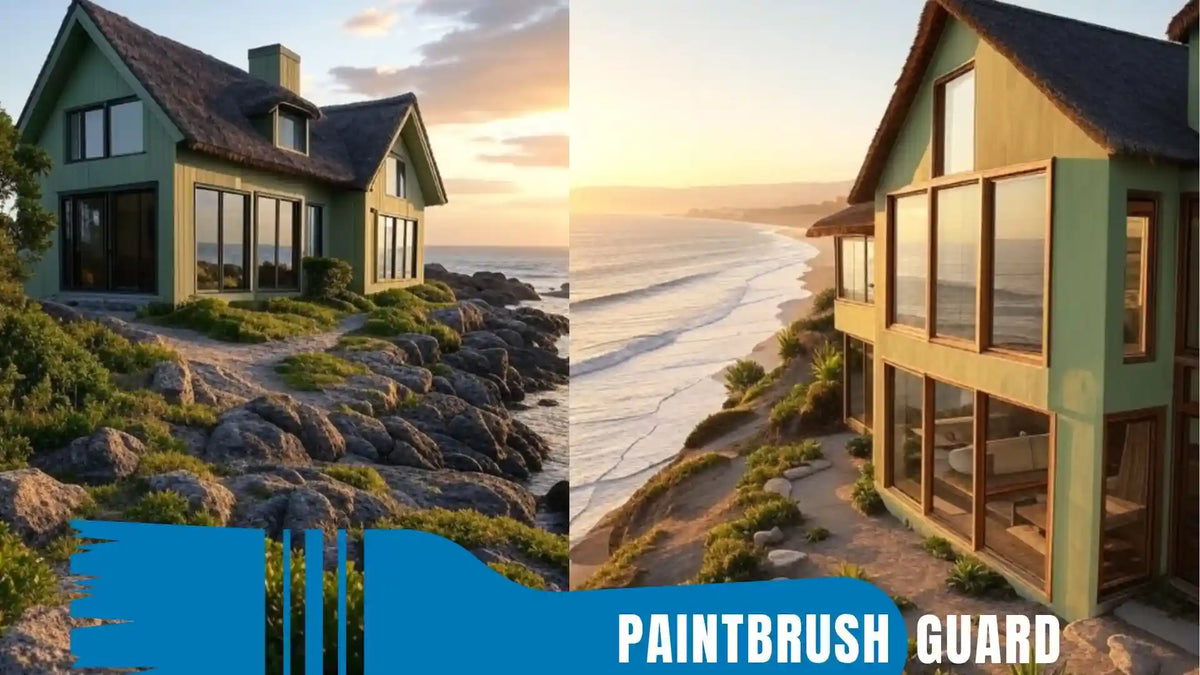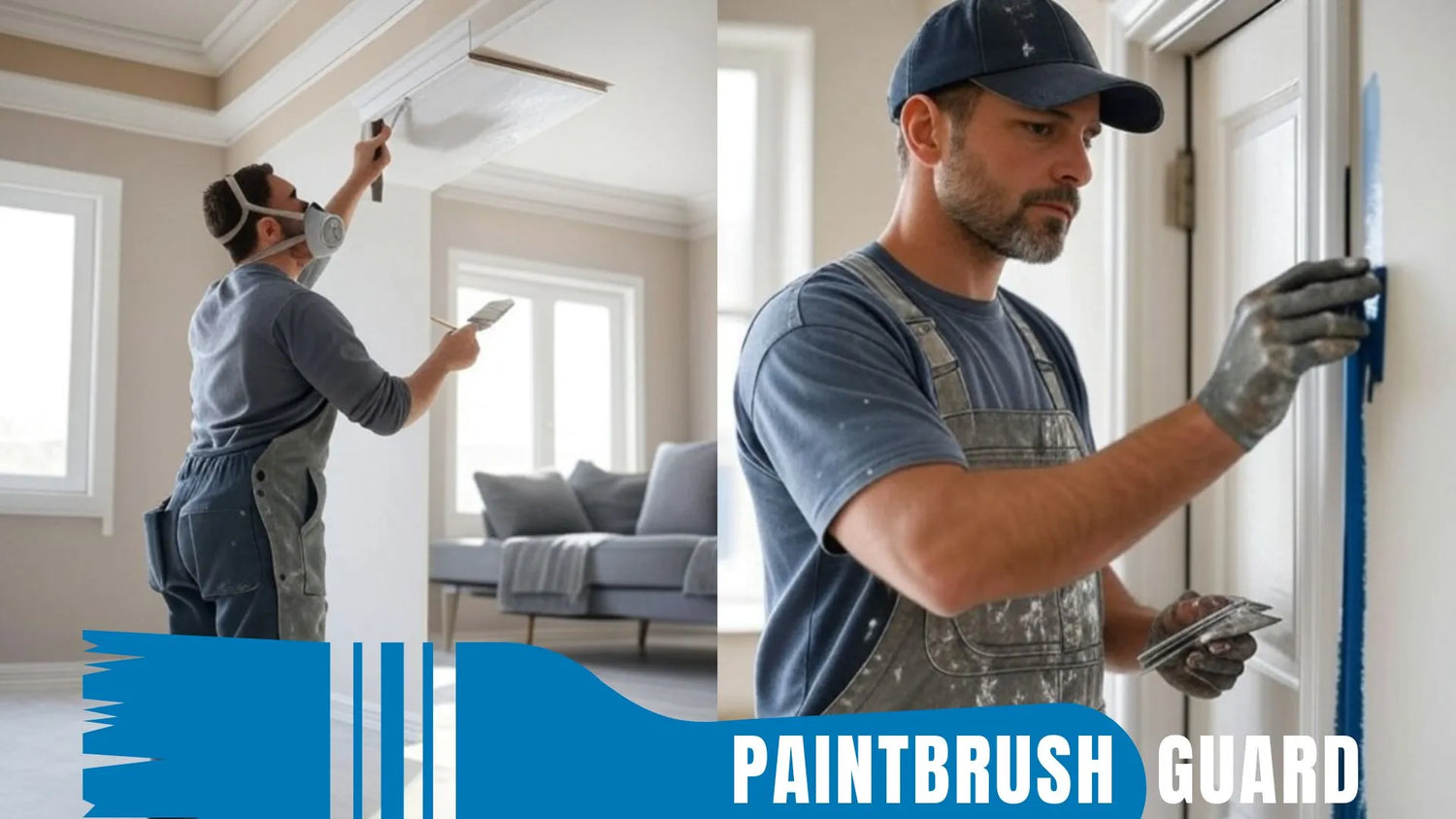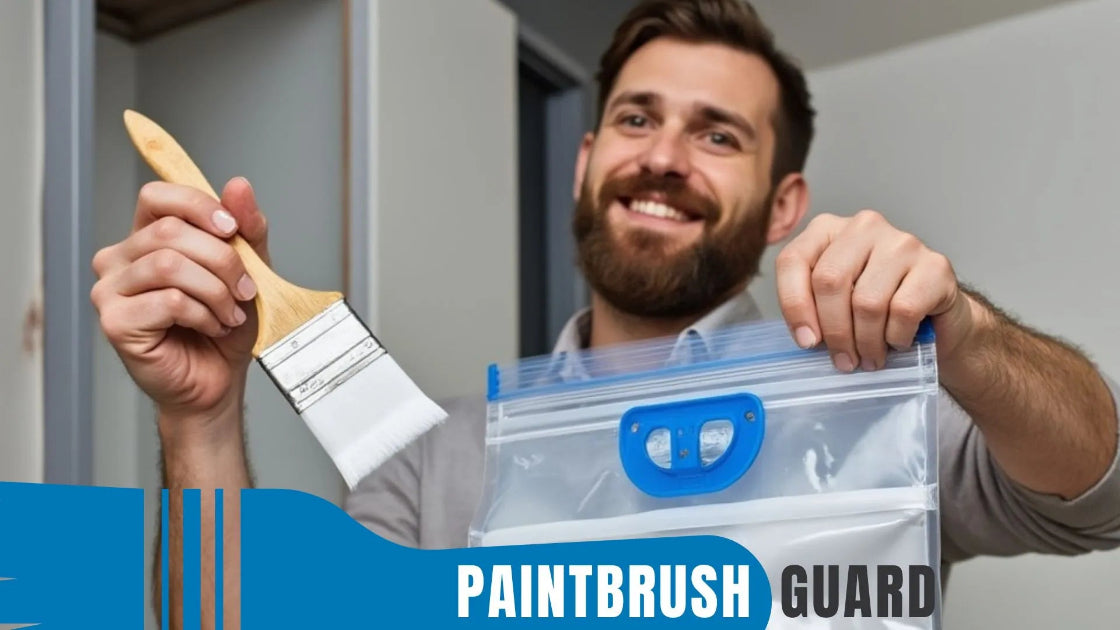
6 Tips for Exterior Metal Painting in Coastal Regions
|
Time to read 7 min
|
Time to read 7 min
Exterior metal painting in coastal regions requires extra attention due to the corrosive nature of saltwater and humid air.
Metal surfaces like railings, gutters, and siding are prone to rust and deterioration without proper preparation and protection.
Achieving a long-lasting finish in coastal regions involves selecting the right materials and techniques to combat environmental stressors.
With the right approach, your exterior metal painting project can withstand the test of time and maintain its beauty.
This exterior metal painting guide helps you achieving a professional long lasting paint result, preventing issues like rust, peeling or uneven finishes.
Selecting the right paint is crucial for exterior metal painting in coastal regions. Opt for high-quality, corrosion-resistant paints designed for marine or coastal environments. Look for:
Using these paints ensures your exterior metal painting project remains intact, even in the harshest coastal conditions.
Read our exterior house painting guide: This mega guide gives you clear tips, tools and methods on how to paint all exterior surfaces on your home.
Proper preparation is the foundation of successful exterior metal painting in coastal regions. Salt, dirt, and oxidation can prevent paint adhesion, leading to peeling or rust.
Allow surfaces to dry completely (24-48 hours) before painting. This step is vital for a flawless exterior metal painting finish in coastal regions.
Priming is essential for exterior metal painting in coastal regions to prevent rust and enhance paint adhesion. Use a rust-inhibiting primer suited for metal, such as:
Apply with a 2-inch angled brush or roller, ensuring even coverage. Let it dry for 4-8 hours before painting. This layer protects your exterior metal painting project from coastal corrosion.
Weather plays a critical role in exterior metal painting in coastal regions. High humidity, rain, and strong winds can ruin your paint job. Follow these guidelines:
Timing your exterior metal painting correctly in coastal regions ensures optimal adhesion and durability.
Adding a protective topcoat enhances exterior metal painting in coastal regions. Consider:
Apply two thin coats, allowing 4-6 hours of drying time between layers. This step extends the life of your exterior metal painting project in coastal regions.
With no cleanup required after a painting session, you can take a short break mid-project or wrap up your painting for the day, your brush stays ready without the need to clean.
Maintaining your exterior metal painting in coastal regions is key to longevity. Follow these practices:
Consistent upkeep keeps your exterior metal painting looking fresh and protected in coastal regions.
Enhance your exterior metal painting in coastal regions with these color pairings:
Crisp White: Brightens metal railings or trim for a clean coastal look.
Soft Blues: Mimics the ocean, complementing coastal beach house exterior paint colors for serene stylish look.
Neutral Grays: Offers a modern contrast, pairing well with surrounding landscapes.
From understanding your home’s architecture to testing shades, this guide covers everything you need to know to get it right.
Even with careful planning, issues may arise during exterior metal painting in coastal regions due to the challenging environmental conditions like saltwater exposure, humidity, and intense UV rays.
Addressing these promptly maintains the integrity of your exterior metal painting in coastal regions, ensuring a long-lasting and attractive finish.
Below are detailed solutions for the most common problems:
Rust can develop quickly on metal surfaces in coastal regions due to salt corrosion.
To fix this, sand the affected areas with 120-150 grit sandpaper or a wire brush to remove rust completely.
Apply a rust-inhibiting primer to neutralize any remaining corrosion, then repaint with a high-quality, corrosion-resistant paint.
Regular inspections can help catch rust early, preserving your exterior metal painting project.
Peeling paint is a clear sign of poor preparation, such as inadequate cleaning or insufficient priming, common in coastal regions where salt buildup weakens adhesion.
Remove all loose or peeling paint using a paint scraper or power sander. Clean the surface thoroughly with a degreaser to eliminate salt and dirt, then sand for a smooth finish.
Reapply a suitable primer and topcoat, ensuring proper drying time between layers to restore the durability of your exterior metal painting.
Fading occurs due to prolonged UV exposure, a frequent issue in coastal regions with intense sunlight.
To address this, select UV-resistant paints or coatings specifically formulated for exterior metal painting in coastal regions.
After sanding and cleaning the faded areas, apply a fresh topcoat or clear sealant to restore vibrancy.
For prevention, consider reapplying protective topcoats every 2-3 years to maintain the color and protect your exterior metal painting from further fading.
This issue often results from moisture trapped under the paint, exacerbated by high humidity in coastal regions.
Cut away blisters with a utility knife, sand the area smooth, and ensure the surface is completely dry.
Apply a moisture-resistant primer before repainting to prevent recurrence, safeguarding your exterior metal painting project.
Chalking, where paint breaks down into a powdery residue, is common in coastal regions due to UV degradation.
Wash the surface with a mild detergent and water to remove chalk, then sand lightly.
Repaint with a premium acrylic or polyurethane paint designed for exterior metal painting in coastal regions to restore the finish and prevent future chalking.
Addressing these issues promptly with the right techniques and materials is essential for maintaining the integrity of your exterior metal painting in coastal regions.
Regular maintenance and timely repairs can extend the life of your paint job, keeping your metal surfaces protected and visually appealing despite the challenging coastal environment.
For complex exterior metal painting in coastal regions, consider professionals when:
Get quotes, check reviews, and ensure licensing before hiring for your coastal regions project.
This article explores the 4 best sprayers for exterior deck painting large surfaces, detailing their features, benefits, and tips for optimal use.
Exterior metal painting in coastal regions doesn’t have to be daunting with the right tips.
By choosing corrosion-resistant paints, preparing surfaces, using rust-inhibiting primers, timing your project, applying protective coatings, and maintaining regularly, you’ll achieve a durable, beautiful finish.
Transform your metal surfaces with confidence in coastal regions today!
Corrosion-resistant paints, like epoxy or polyurethane coatings, protect metal surfaces from saltwater and UV damage in coastal regions. These paints, along with zinc-rich primers, ensure a durable finish that resists rust and weathering, maintaining the integrity and appearance of railings, gutters, or siding.
Thoroughly clean surfaces with a low-setting pressure washer to remove salt and grime, apply a degreaser for oily residues, and sand or scrape rust with 120-150 grit sandpaper. Allow 24-48 hours for drying. These steps ensure proper paint adhesion for a lasting finish in coastal conditions.
A rust-inhibiting primer, such as oil-based for rusted areas or galvanized metal primers, prevents corrosion and improves paint adhesion. Applied with a 2-inch angled brush or roller and dried for 4-8 hours, it protects metal surfaces from coastal saltwater and humidity, extending paint longevity.
Painting in temperatures between 50°F and 85°F with low humidity ensures proper adhesion and drying. Avoid rain, high winds, or direct sunlight to prevent bubbling or cracking, as these coastal conditions can compromise the quality and durability of your metal painting project.
Annually wash metal surfaces with mild detergent to remove salt buildup, inspect every 6-12 months for rust or peeling, and touch up minor damages with matching paint. These practices prevent corrosion spread and maintain the vibrant, protective finish of your coastal metal painting project.

Learn about eco-friendly painting, tips and tutorials on house interior and exterior surfaces, so you can get started with your project without any surprices during or after your painting.

Learn how interior house paint colors influence mood with expert tips on room preference so you can pick the best colors for a harmonious home environment.
We focus on the most popular shades for each interior colors, so you don't miss no matter what color you pick.

Learn how this innovative tool allows you to store paintbrushes without the need for immediate cleaning, offering significant advantages in time savings, water conservation, reduced chemical pollution, and lower costs for supplies.




